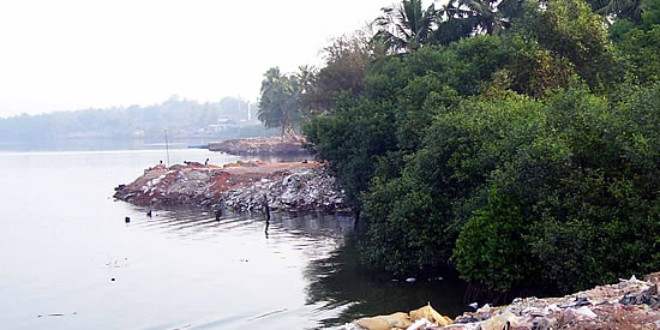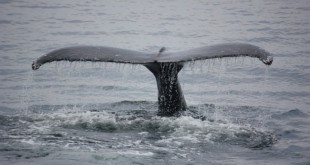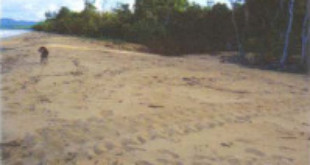They are described the funnels on the surface of the earth connecting the underground water sources, they suck water in the rainy season feed the water veins and in the summer time they maintain the water level on the surface. These wonderful and very useful wetlands are now being chocked with tons of soil by real estate lobby in a mindless reclamation of land in Mangalore.
In Coastal areas wetlands are manifested as estuaries, marshes, bogs, ponds and paddy fields which are abundant in and around coastal cities like Mangalore, Udupi, Kundapur, Bhatkal, Honnavar and Karwar this region has been rated at class water bodies in the international charter of wetlands, but the real estate lobby here does not care and neither the state government says the greens. These water bodies have been neglected and are fast disappearing. Most of them have given way to construction of urban dwellings, agricultural operations and natural siltation. The siltation is alarming and has been attributed to deforestation around wetlands. In Dakshina Kannada district alone, over 540 ponds and tanks are on the brink of being destroyed by “willful closures” and mindless urbanisation. India has no law to bring wetlands under declaration of land norms.
 The district has two of the most sensitive wetlands which are ranked 29th among the world’s endangered wetlands. They are: Gangolli estuary in Kundapur taluk (undivided Dakshina Kannada) which is being degraded by saline water shrimp-farming; and the Anekere tank in Karkala, now in Udupi District, which has become a garbage dump, heavily silted and choked with weeds.
The district has two of the most sensitive wetlands which are ranked 29th among the world’s endangered wetlands. They are: Gangolli estuary in Kundapur taluk (undivided Dakshina Kannada) which is being degraded by saline water shrimp-farming; and the Anekere tank in Karkala, now in Udupi District, which has become a garbage dump, heavily silted and choked with weeds.
Ironically, India is a signatory to the International Treaty on Conservation of Wetlands signed at Ramsar in Iran in 1971. The treaty came into force in 1975 and was meant to guard against the irrational destruction of wetlands, particularly in developing countries. The district administration here which is supposed to honour the commitment made by the country to the international comity of nations to protect the wetlands has turned a blind eye towards this outrageous development.
The role of wetlands – especially peatbogs which make up almost half the world’s wetlands – in regulating climate and reducing the greenhouse effect through their capacity to retain carbon dioxide has been scientifically established.
Director of the Wetland International Asia S.A. Hussian says “apart from acting as a waterfowl habitat the wetlands help prevent droughts and floods and recharge groundwater during summer. They help arrest floods and are considered to be “terrestrial funnels” which absorb excessive water from the surface and discharge it when needed. Ecologically the wetlands are called “water savings bank”.
Quoting various studies Dr. Hussian said “Wetlands not only store water but also improve water quality. This was established by studies in the Chowilla flood plains in Australia as observed by Mr. Bill Phillips in the volume published by the Ramsar Convention Bureau, “Towards the Wise Use of Wetlands”. He points out that wetlands even purify sewage. Other functions of wetlands include erosion control, sediment retention, biomass export, wind break, nutrient retention and water transport from excess to deficient areas through water veins.
The benefits of these evergreen water resources to mankind are multifold. They are known to be natural protectors of forests, wildlife and agricultural resources. Wetlands also contribute to fisheries, shoreline stabilisation, water supply and help conserve biological diversity.
Likewise, wetlands in Kerala, Tamil Nadu, West Bengal (Sunderbans) Maharashtra, Gujarat, Orissa and Uttar Pradesh are also being degraded and destroyed. Of the 88 wetlands of international importance in the country, 45 per cent are under “moderate to high” threat. Estuaries on the West Coast are also categorised as highly endangered international wetlands says Dr.Hussian.
Dr. N. A. Madhyastha, ornithologist and a noted zoologist, says “wetlands in the State have played host to several species of migratory birds such as golden plovers, curlews, avocets, cranes, pintails, bar-headed geese, terns, ducks and yellow wagtails for centuries. But with the degeneration of wetlands, these birds are now finding new routes as the profile of waterfowl habitats has been changing constantly.
Quoting from “The Global Biodiversity – Status of Earth’s Living Resources” compiled by the World Conservation Monitoring Centre, Dr. Madhyastha says India has over 93 wetland sites spread over 54,700 sq km and Asia has over 947 sites spread over 734,000 sq km. The benefits of wetlands have been taken for granted and, as a result, maintenance of natural wetlands has received low priority.
(From mangalorean.com, India, by Team Mangalorean)
 Ocean Sentry
Ocean Sentry



